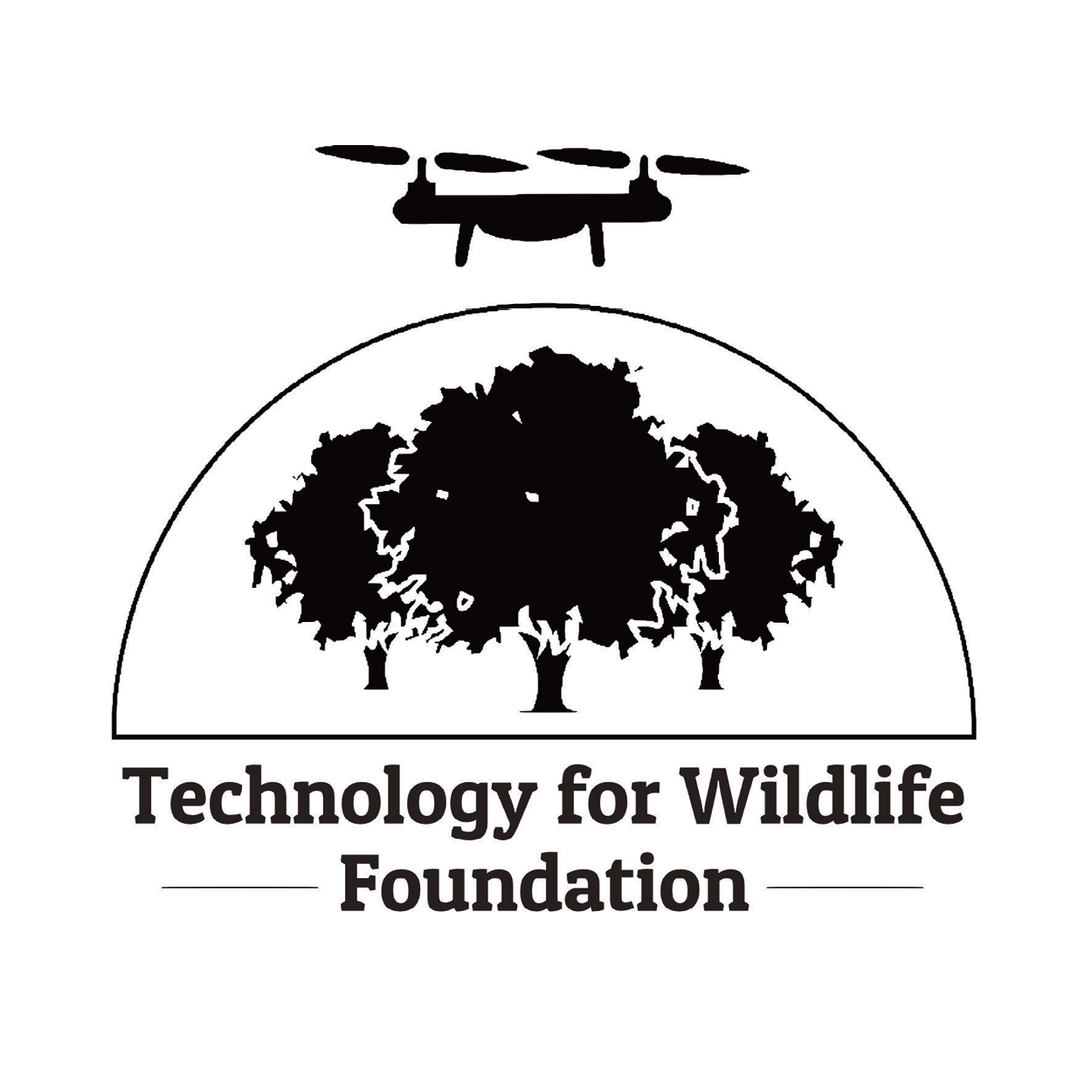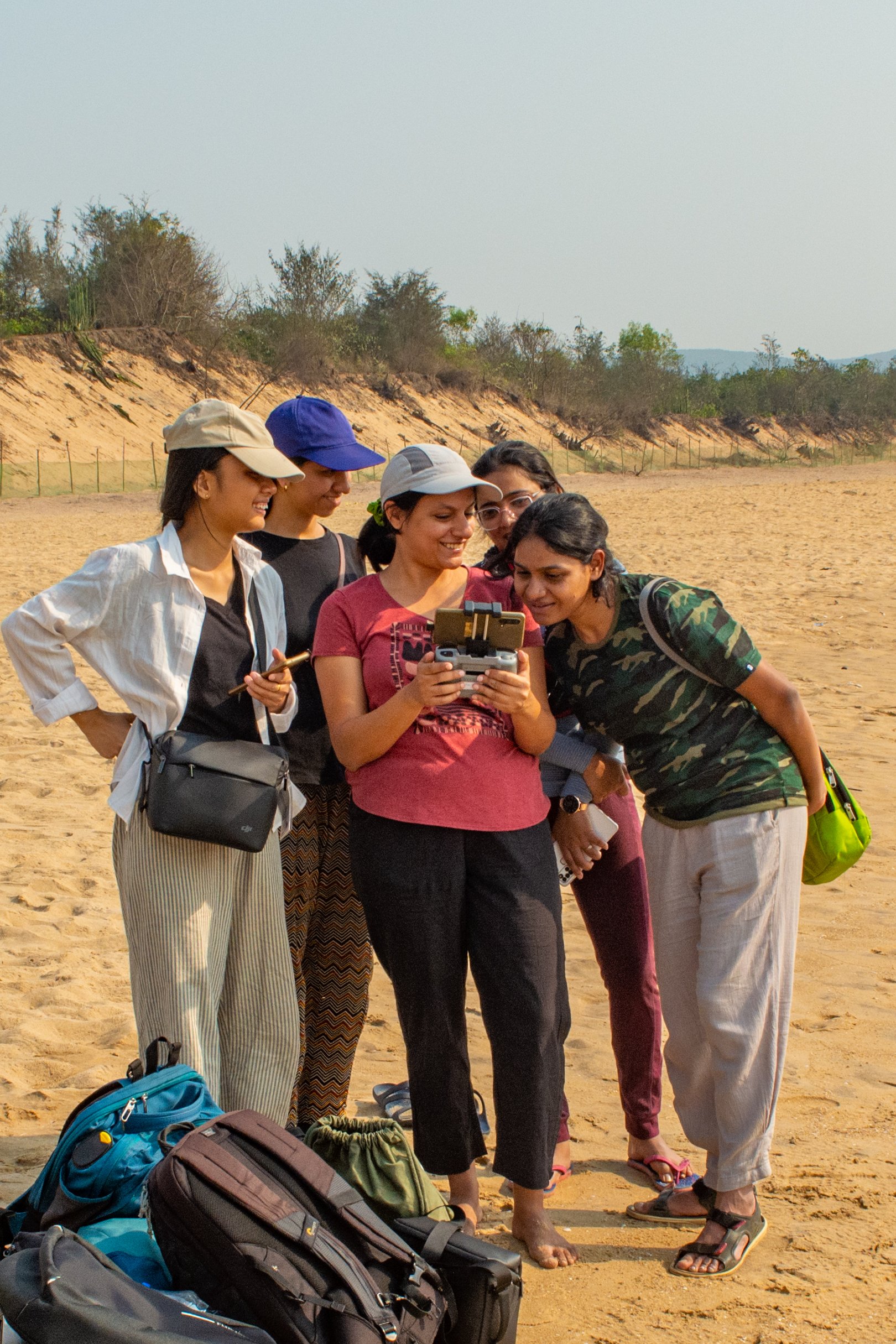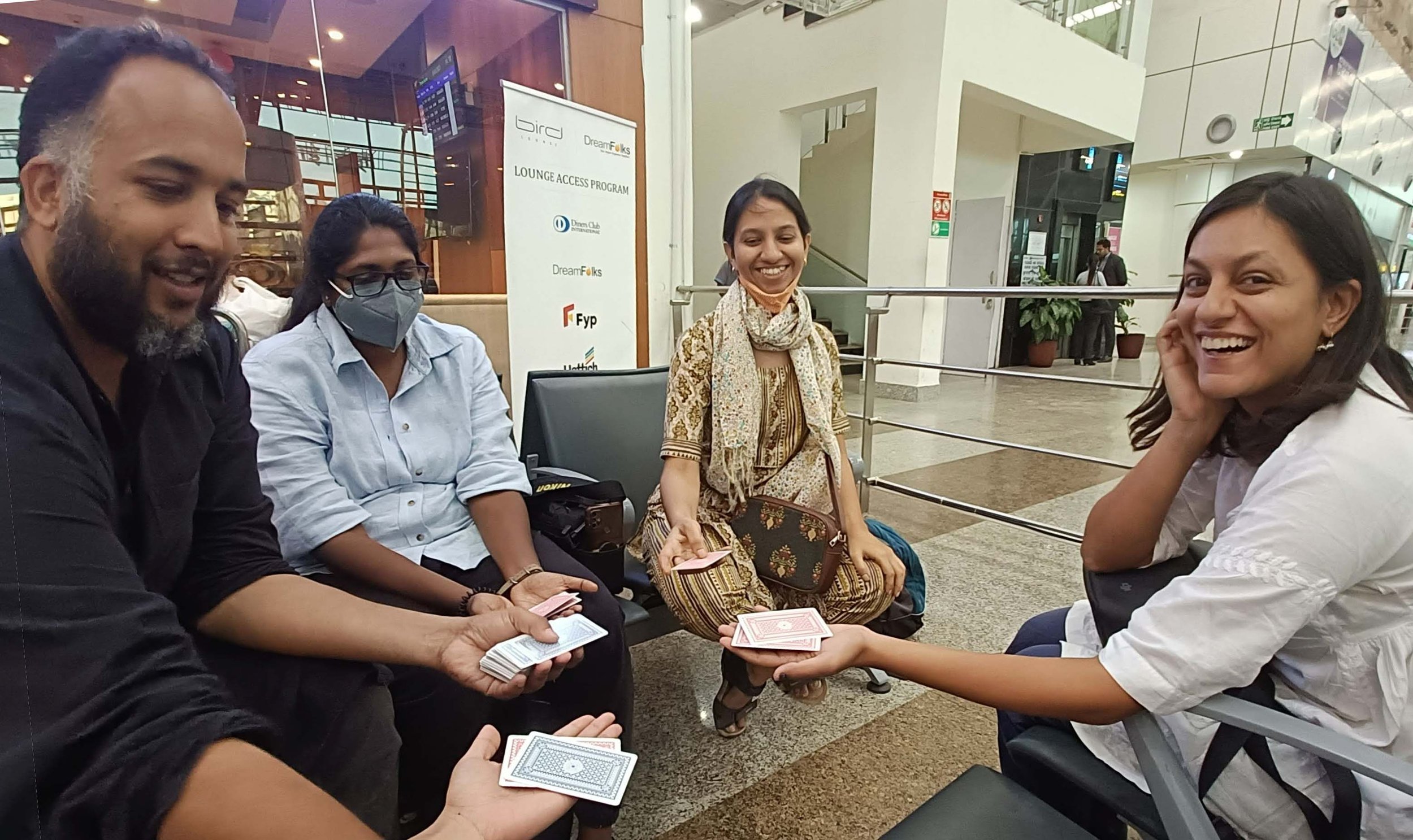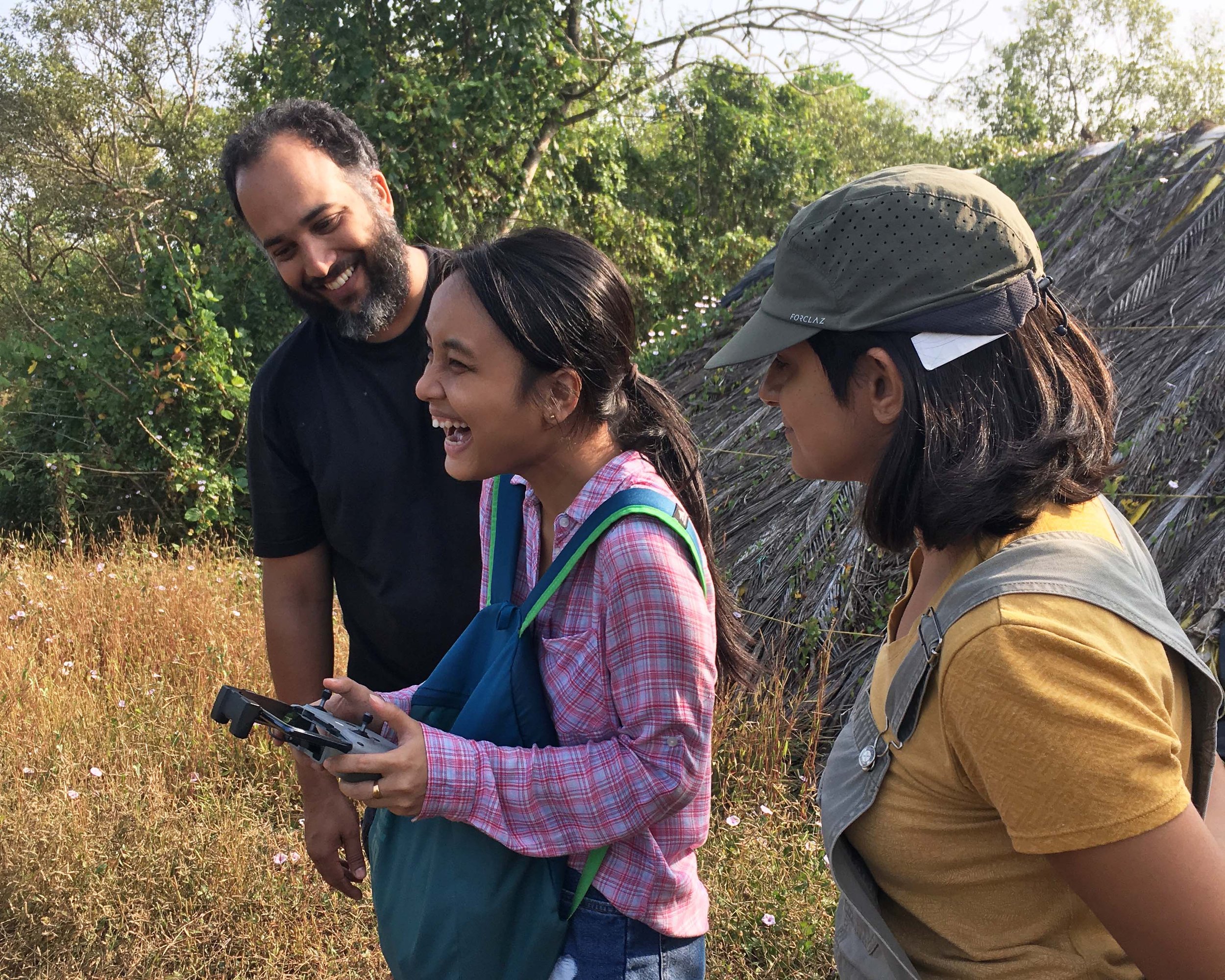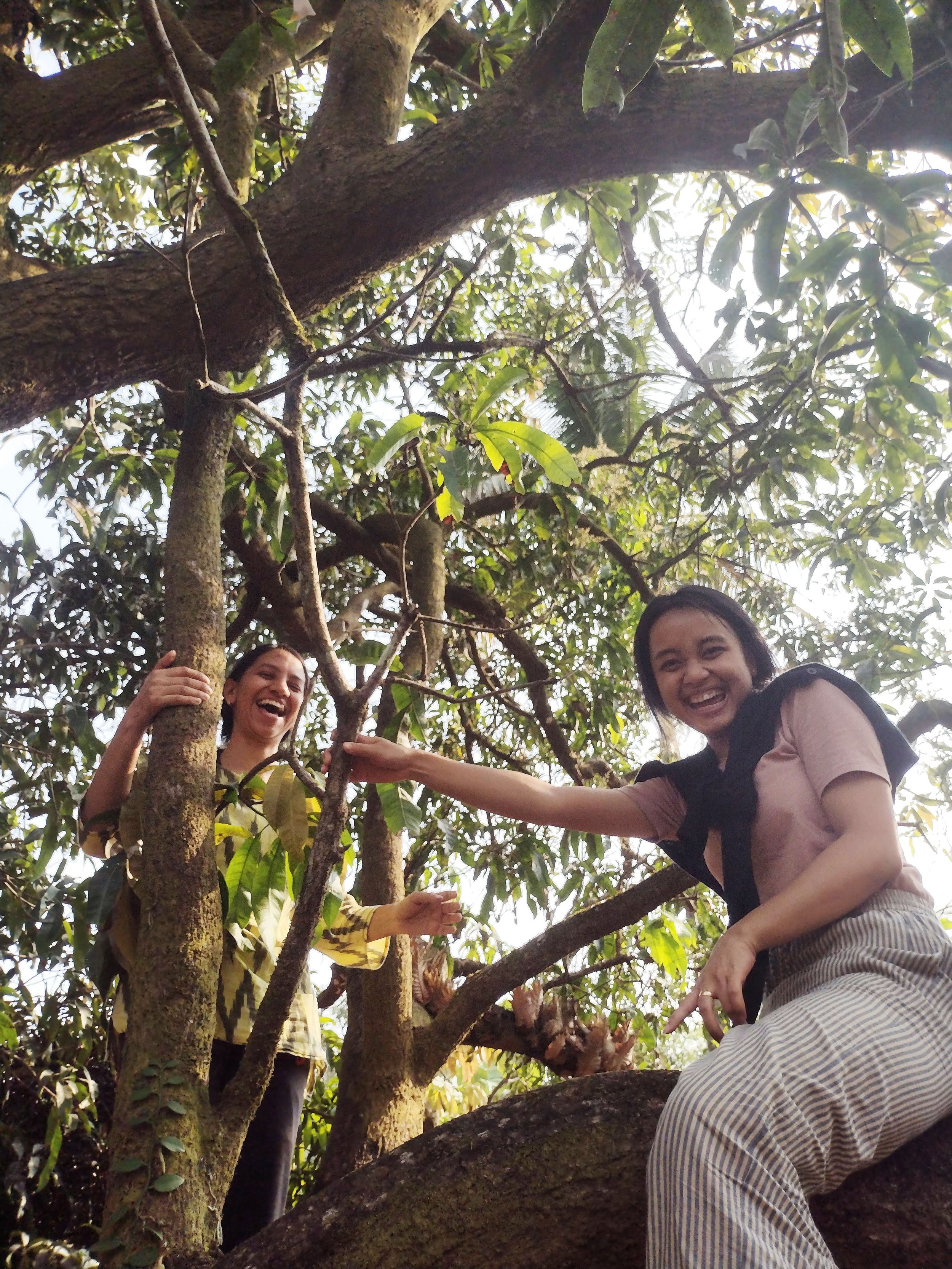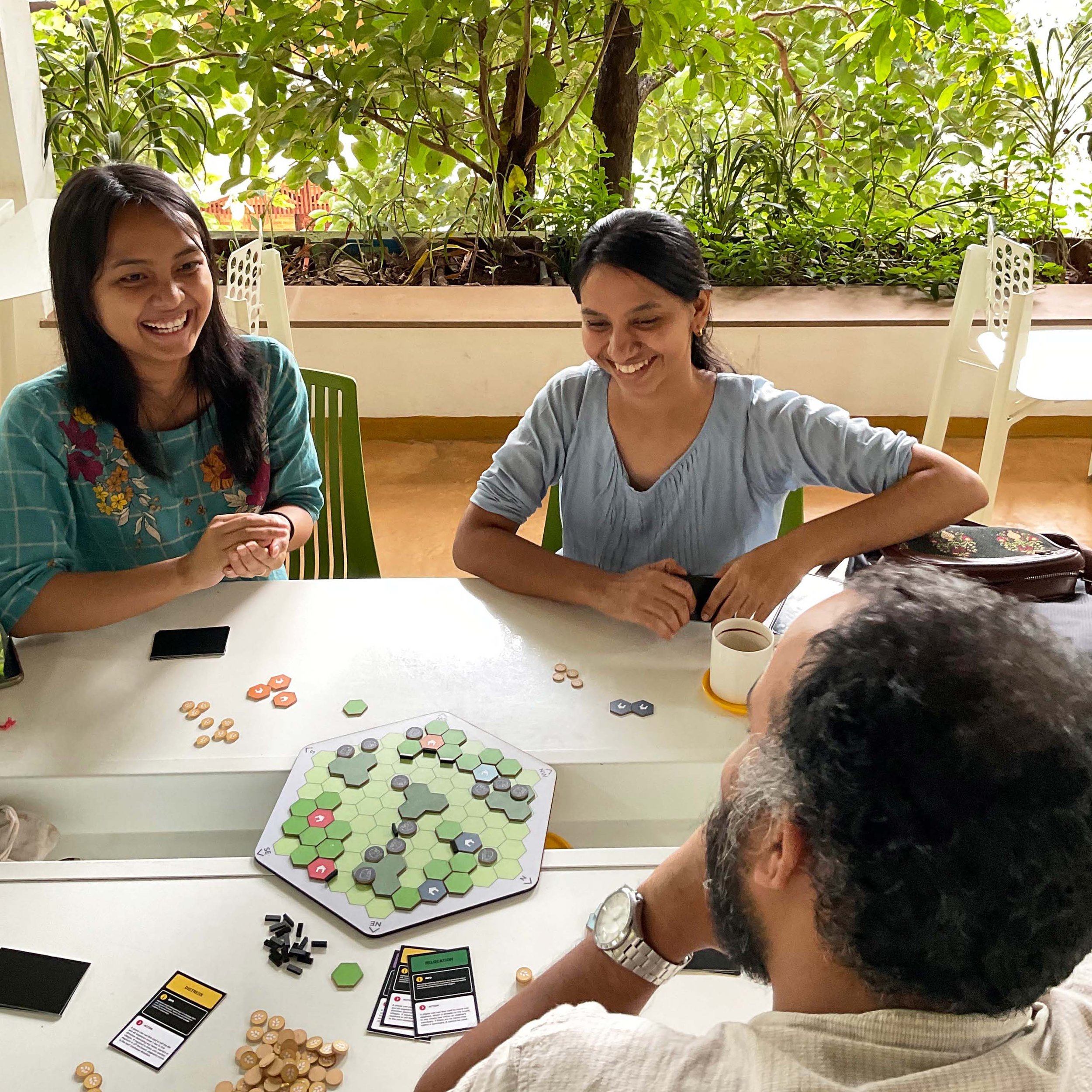TfW with collaborators in Mhadei, January 2023.
2023 was definitely a very unusual year at TfW. The year began in full steam- with workshops, conferences and lots of field work with travel. We were then suddenly presented with a situation nobody anticipated- finding ourselves without Shashank Srinivasan, our Founder-Director. While it was a year of irreplaceable loss, it came with its own learning and growth. This blog is a reflection of what it has been like navigating this change over the last few months.
When faced with this situation of suddenly being without our team leader, I found myself in a new position of leadership. The very first thing was to see if the organisation-really the people, a small team – remained motivated to keep going. Without hesitation, the entire team was sure of wanting to continue work and see projects through. It was a relief that we all felt this way, and I understood what it meant to be a mission-aligned organisation. We believed in the work we were doing, were motivated by it and unwilling to let it go. It strengthened my own belief in the work we did, that nobody needed any convincing to stay in a period of uncertainty.
Core-team, June 2023.
Team in discussion, July 2023.
The projects of course meant little without the team behind them. I cannot adequately describe the incredible resilience, understanding and grit of the team I’m so lucky to be a part of. Each and every person showed determination and growth, both technically and personally. They met commitments and created high quality work while showing endless patience and adaptability with me and changing circumstances. Aditi and Sravanthi upskilled significantly and grew more independent in their tasks. Nancy and Shivangini took on additional responsibilities and workload. These are the things that kept us going in the months since.
Unexpectedly, it felt like the team also grew- we began working with Sandhya Srinivasan as our Director, and our accountant Nikhila Ballal. As the Director, Sandhya Auntie, continued to provide the structural support the organisation needed to keep running as well as immense understanding, and kindness that helped us retain the character and culture of the organisation. Nikhila, our accountant was always a part of our set up but someone I hadn’t previously interacted with. I valued her presence more than ever as provided patient explanations and guidance while making sure our work could continue smoothly.
TfW in Mhadei viewing forest fire scars, May 2023.
Without planning for it, it also suddenly became a team composed entirely of women- managing everything from field work and GIS to communication and accounts. It was an unexpected but special and empowering experience for me. To be working in an environment where each colleague was a competent, empathetic and motivated woman was a support and inspiration I never anticipated I would experience, let alone this year. I know this is a rare phenomenon in any field, and it has significantly helped ease some of the difficulties in this transitionary period.
TfW in Odisha surveying olive ridleys, March 2023.
What also made it possible for us to keep working was the stable support and patience from our donors. To have continued belief in our work and ability was immensely reassuring and gave me the confidence I needed to keep going. It also gave us the ability to focus our energies on the work we were doing, rather than anything else.
The conservation community, especially that in Goa, further felt like a safe and valuable ecosystem to be a part of where our worth was acknowledged, and support extended. Trust, built over years was tangibly felt and helped us to continue to feel a part of the community in which we work.
Professionally, for me the year was of learning to manage and adapt continuously. It was a journey of understanding personal and collective capacity- of knowing when and to whom to ask for help and finding the sparks that keep us motivated. Most of all, in everything, as I deliberated and thought- ‘What would Shashank do?’ I realised just how much difference a single person can make. Like him, every single person in the team has created so much wonderful work and change. This has provided me with inspiration and helpful reminders of what we are capable of.
With this as we begin the new year, more changes are to come and we hope we can continue to create positive change and share this journey with you all!
The team sharing a light moment while waiting to board a flight, March 2023.
